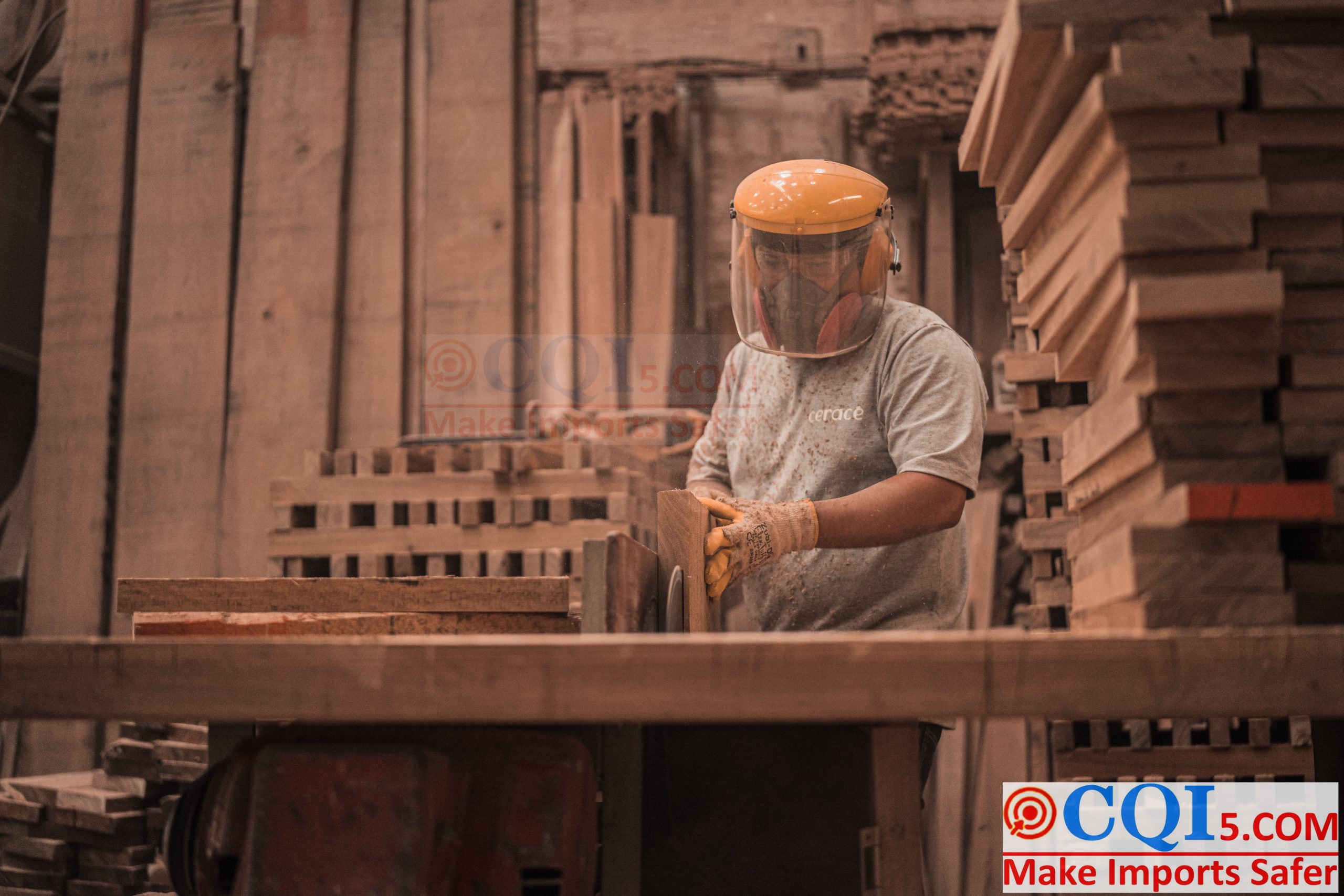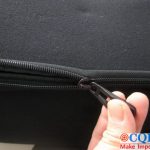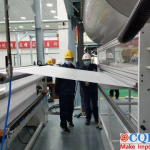Fishing Rod Industry in China,The Future of Weihai, Shandong
My hometown Weihai was awarded the title of ” City of Fishing Rods in China” by the China Culture, Education and Sporting Goods Association in 2018. Back in 2011, Weihai was awarded the title of “Fishing Tackle Capital of China”. So today I would like to talk about the fishing rod industry in Weihai Shandong Province China.
With just two titles, you may not have an image of Weihai’s fishing tackle industry. But look at a set of data, you will understand why Weihai is the king of the world’s fishing tackle, especially fishing rods domination.
Statistics show that 80% of the global fishing gear comes from China, and half of them come from Weihai. In fact, in the segment of fishing rods, basically all the fishing rods in the global market come from Weihai. In other words, Weihai has dominated the world. Only Japan and the United States still have a small amount of high technology high-end fishing rods.
Weihai has formed a huge fishing tackle industry, so the title of Fishing Tackle and Fishing Rod City is well deserved. So, how did Weihai form such a pillar industry? Can this be a lesson for other cities to develop their sporting goods industry?
Generally speaking, behind this, there are certain innate advantages, some external environmental conditions, and the unremitting efforts of those fishing gear owners themselves. Of course, there are some unexpected gains in industrial development.
My father is the historical witness of Weihai fishing gear development. As a reporter, I interviewed him by the way.

Fishing Rod Industry in China,Historical Background
China’s first fiberglass fishing rod was born in Weihai, which has some origins. In the early 1980s, Mr. Liu, an old foreign trader of Shandong Light Industrial Products Import and Export Company, brought back an Austrian fishing rod from the Canton Fair. The foreigner wanted to find out if there were any manufacturers in China.
The background of this time is that the fishing rod production in the United States has experienced the first industrial transfer in the 1950s to Japan, and European fishing rods are also imported from Japan. Japan’s fishing tackle cost is relatively low, and the product quality is good, and precision, high, medium and low grade can be satisfied.
At this time, there was no glass fiber fishing rod in China. Before 1984, I had never heard of any factory that could manufacture it. At this time, Chinese people fishing is to make their own bamboo poles to go fishing by the seaside and lake, without modern and industrialized fishing gear. This teacher Liu went all the way along Jiaodong Peninsula, from Qingdao to Yantai, and finally to Weihai, and took this fishing rod and asked us if the Chinese could make it themselves.
Teacher Liu found Weihai No.1 Plastic Factory, and after nearly a year, he really made a rough imitation.
Why have to produce fishing rod? At that time, in fact, fishing rods were very profitable, with extremely high profit margins, and Japanese products were in short supply. If China can produce it by itself, 5 yuan’s fishing rod with money cost can be sold to 10 yuan or above, and it can also be exported to the country for foreign exchange. Let’s see, we make it ourselves, and with the exchange rate factor, the price will be very competitive.
Why can the plastic factory in this small place of Weihai make it, and then become the city of fishing rods after more than 30 years? Let’s talk about the light industry base of Weihai. At that time, Weihai could already make many kinds of plastic products, including plastic flooring, instant coffee cups, artificial leather and so on, and could supply the whole country. Therefore, the administrative level of Weihai Plastics Company, a state-owned enterprise, is tied with the Second Light Industry Bureau, instead of being subordinate to Qingdao and Yantai. This innate advantage has planted the seeds of an industry.
The first imitation fishing rod can only be regarded as the prototype of the product. However, on the historical axis, people didn’t know that Weihai was about to catch up with the third shift of fishing tackle industry. The second transfer was from Japan to South Korea with low labor price, and this time, fishing tackle manufacturing was invisibly transferred from Japan and South Korea to China.
Shandong Province, with a land area of 1.5 South Korea, is surrounded by the sea on three sides like South Korea. At that time, the economy of South Korea was not much more developed than that of Shandong. However, since the beginning of mass production, Weihai’s fishing tackle industry, especially the fishing rod industry, has started the road of dominating the world, which starts with seizing the opportunity to replace South Korea first.
At the time of industrial transfer, Japan happened to be looking for a subcontractors. After Mr. Liu showed this rough finished product of Weihai to Japanese companies, Japanese companies thought they could settle down in Weihai for OEM, and Mr. Liu invited Japanese fishing rod industry technical experts to guide them. Some of the technological links, such as how to paint fishing rods, look or think it will be very simple, but in fact, it is not as fine as Japan and South Korea.
Since Weihai was able to mass-produce fiberglass fishing rods, in 1985, Weihai No.1 Plastic Factory separated the fishing rod production line separately and established Weihai Plastic Fishing Gear Factory, both of which were managed by the plastic company. Later, the plastic fishing gear factory became a global fishing gear company, and almost everyone knows it in Weihai and fishing rod industry. Of course, this is another story.
In 1985, my father changed jobs from the army and worked in the plastic fishing gear factory. Until now, he was rehired after retirement. He personally experienced the history of China’s fishing rod from scratch. He went from workshop director to production section chief, then came to the research institute to be responsible for sales, and finally served as the deputy general manager of the company. His father’s generation of fishing gear men is the epitome of China’s fishing rod industry. In the late 1980s, when the then premier was investigating Weihai, his father also introduced the production technology links and reported the work to the premier on behalf of the company. This is also the beginning of the peak of the industry.
In the late 1980s, fishing rod industry, like many light industrial consumer goods industries in China, took advantage of cheap labor to do OEM work, and then made its own brand after learning basic skills. Until the early 1990s, enterprises successively applied for the right of self-operated import and export trade after opening up, and the plastic fishing gear factory (global fishing gear) became even more ambitious to impact the international market.
Before the end of 1980s, Made in China’s fishing rod was mean the fishing rod of Weihai Plastic Fishing Gear Factory. At that time, there was a national policy that state-owned enterprises should also help township enterprises to develop the economy. Therefore, plastic fishing gear factory began to help a township enterprise-Tiancun Petrochemical Research Equipment Factory, which was later Guangwei fishing gear, from 1987 to 1988. This is also a name to remember in the history of fishing rod development, just like global fishing gear.
Kwong Wai Fishing Tackle started from making auxiliary materials for plastic fishing tackle factories and gradually learned the whole set of technology of manufacturing fishing rods. It can be said that Chen Guangwei, the founder of Guangwei Fishing Tackle, is a person with great vision and pattern. With Guangwei, the plastic fishing tackle factory began to have competitors in the domestic market. In addition, during the development process, many people left to go it alone, and Weihai also has many apprentice fishing tackle factory.With the market competition, the industry has a price war, the rules have changed, from short supply, cash purchase to receive goods first before make payment.
In the international market, in the early 1990s, plastic fishing gear factories also had fierce competition with their Korean counterparts in export trade, and of course, they also had to fight price wars with the red-eyed Koreans. At the same time, the plastic fishing gear factory is a joint venture with Shandong Light Industrial Products Import & Export Company, which was renamed Global Fishing Gear. Finally, in 1995, according to the balance of internal and external environment, Global Fishing Gear decided to give up the domestic market and focus on the global market. As a result, Guangwei fishing gear and so on ate the share of global fishing gear in China, while in the international market, global fishing gear rose rapidly.
Japan has always mastered the most advanced technology in the fishing gear industry, and acted as an American supplier. In my childhood memory, my father went abroad on a business trip to Japan and South Korea. It was not until I went to college that my father had the opportunity to go to the American Fishing Gear Exhibition. China’s fishing rod is also gradually shifting from OEM to brand to Japan and South Korea, and then to European and American markets.
There was Japan before, and then China. From 1995 to 2000, Korean fishing rods with the same market position as China were finally gradually squeezed out of the international market. The main reason is the sharp rise of labor cost in South Korea in 1990s. History has favored the fishing rod industry in Weihai, and our demographic dividend has been eaten for nearly 20 years. Of course, it is not only the time dividend that has caused China’s competitive advantage over South Korea. In fact, Weihai fishing gear makers have made great efforts in technology to improve the technical content, trying to aim at the last 1% of high-end fishing rod supplies in the international market. It is also destined that the fate of Korean manufacturers will be jointly harvested by China and Japan.
By the mid-1990s, the most popular fishing rod with the highest profit and price in the international market was made of carbon fiber. Carbon fiber, a material with high strength, light weight and good toughness, can’t be produced by China itself, but only by a few countries such as the United States, Japan, Russia and Germany. This new material can also be used in many other products, such as aircraft wings, bridges, oil storage tanks, high-speed train heads, F1 racing cars, wind turbine blades, etc. If it can be used in military industry, Europe and America are more sensitive.
According to the “Paris Coordinating Committee” regulation, Japanese fishing gear manufacturers can only specify the purpose and record the quantity of carbon fiber used in China’s OEM, which is the same as that of luxury brand OEM manufacturing in China. We should calculate the quantity of incoming materials and finished products without any loss.
Fishing Rod Industry in China,Development of Carbon Fiber
Weihai’s fishing rod industry can manufacture carbon fiber fishing rods for Japanese OEM, that is, import Japanese carbon fiber cloth. Later, Guangwei fishing gear imported carbon fiber silk and spun it into carbon fiber cloth by itself, but this step from silk to cloth is not difficult. How to make carbon fiber filament, Japan and a few other countries have always kept the secret.
Chen Guangwei of Guangwei fishing gear made up his mind to break through this technical problem, hoping to finally realize self-production in China from the source of carbon fiber filament. At the same time in China, enterprises in other industries tried to break through the technical problems of this new material, such as Jilin Chemical Industry, which serves the military industry.
It took Chen Guangwei more than 10 years to overcome the problem of carbon fiber. One of his sons, Chen Liang, studied in Japan, and after busy with carbon fiber fishing rods, he now took over the Guangwei Group, which was listed on Forbes China Rich List last year. In order to do carbon fiber research, Guangwei fishing gear almost went bankrupt at the most difficult time. Chen Guangwei put all his money on it, and mortgaged all the factories and equipment. Finally, he won the Weihai Municipal Government, the General Armament Department of the People’s Liberation Army and the State Science and Technology Commission, and invested part of the capital to hold shares to support it.
In the end, Guangwei made carbon fiber filament, although it could not be mass-produced, but it took the lead in breaking through this new material problem in China before Jilin Chemical. Nowadays, it has already been able to mass-produce and be used in many industries other than fishing gear, such as the blades of wind turbines (there is a wind turbine on the east coast of Weihai), as well as the most advanced J -20 fighters and unmanned helicopters of our army.
As a result, Guangwei fishing gear has added a new material business, which is getting bigger and bigger, and it is much bigger than the fishing gear business in the past. At present, Guangwei Group is a listed company, and the carbon fiber of Guangwei Group can also be directly used by domestic fishing gear industry, and at the same time, it competes with Japan and other countries in a certain level of carbon fiber material business. In China, only a few single-digit enterprises can produce this kind of material at present.
It is both unexpected and reasonable that new materials are hatched from fishing rod industry. Weihai’s fishing rod industry, if magnified in the whole Chinese system, is taking the road of OEM-Brand-Self-developed technology breakthrough. Many sporting goods and light industrial products in China have been attacked internationally in this way and become the world hegemon, such as sports shoes, such as the glass on Apple’s mobile phone.
Weihai’s fishing gear industry started with fishing rods, followed by peripheral spare parts, and now there is also an annual fishing gear fair, which forms the whole industry of production, trade, exhibition and so on. Now there are more than 1,000 fishing gear production and supporting enterprises in Weihai, with an annual output value of more than 10 billion yuan. Next, Weihai will continue to combine the tourism industry to build sea fishing and leisure fishing projects, and continue to expand related industries. Keep the labels like fishing and fishing tackle firmly.
There are a large number of fishing enthusiasts in China. On the Internet, it has been said that the destination of middle-aged men is not only bracelets, keeping fit and drinking tea, but also fishing. It can forget troubles and bring some passion and hope to middle-aged people’s life. Besides playing golf, fishing is not only a means for the boss to socialize, but also a way for the common people’s friends and brothers to have a casual exchange together. Fishing gear is an industry that can bring people health and happiness. In the future, it can also be upgraded by combining some new modern technologies. For example, I have already seen that in the video, some players combine drones to play sea fishing.
From a certain point of view, middle-aged people all over the world have to thank Weihai fishing rod industry and Chinese fishing tackle industry for providing them with products, giving them an extra way to relax and have a little space to get along with themselves in this chaotic and changeable world.
Disclaimer:
CQI5 article information from the Internet and contributions, the copyright of which belongs to the original author, and only represents the views of the original author. This website is only responsible for sorting out, typesetting and editing the articles, reproduced for the purpose of spreading more information, does not imply that it endorses its views or proves the truthfulness, completeness and accuracy of its content, and therefore does not assume any legal responsibility.
The information contained in this article is for reference only and is not intended as direct advice for decision-making.
If we inadvertently violate your copyright, please inform us, after verification, we will immediately correct or delete the content according to the requirements of the copyright holder, thank you! Contact, email: copyright@cqipro.com
This website has the final right to interpret this statement.
Welcome to reprint, Please be sure to keep information complete.






